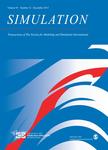版权所有:内蒙古大学图书馆 技术提供:维普资讯• 智图
内蒙古自治区呼和浩特市赛罕区大学西街235号 邮编: 010021

作者机构:Raja Ramanna Ctr Adv Technol Synchrotrons Utilizat Sect Room 07 Indore 452013 MP India Homi Bhabha Natl Inst Mumbai Maharashtra India Univ Petr & Energy Studies Sch Engn Dept Phys Dehra Dun Uttarakhand India
出 版 物:《SIMULATION-TRANSACTIONS OF THE SOCIETY FOR MODELING AND SIMULATION INTERNATIONAL》 (仿真)
年 卷 期:2021年第97卷第9期
页 面:635-644页
核心收录:
学科分类:08[工学] 0835[工学-软件工程] 0812[工学-计算机科学与技术(可授工学、理学学位)]
基 金:Department of Atomic Energy
主 题:Global optimization teaching-learning-based optimization finite element method shape control piezoelectric bimorph MMA BOBYQA COMSOL Multiphysics MATLAB JAVA
摘 要:Finite element methods (FEMs) are more advantageous for analyzing complex geometry and structures than analytical methods. Local search optimization techniques are suitable for the unimodal problem because final result depends on the starting point. On the other hand, to optimize the parameters of multi-minima/maxima problems, global optimization-based FEM is used. Unfortunately, global optimization solvers are not present in, COMSOL Multiphysics, a versatile tool for solving varieties of problems using FEM. Teaching-learning-based optimization (TLBO) is a global optimization technique and does not require any algorithm-specific parameter. In this paper, FEM is coupled with TLBO algorithms in COMSOL Multiphysics for solving the global optimization problem. The TLBO algorithm is implemented in COMSOL Multiphysics using the JAVA application programming interface and tested with the standard benchmark functions. The solutions of the standard benchmark problem in COMSOL Multiphysics are in close agreement with the results presented in literature. Furthermore, the optimization procedure thus established is used for the optimization of actuator voltage for piezoelectric bimorphs to achieve the desired shapes. The FEM-based TLBO method is compared with two optimization methods present in COMSOL Multiphysics for a shape control problem;(i) method of moving asymptotes (MMA) and (ii) Bound Optimization BY Quadratic Approximation (BOBYQA). The root mean square error shows that the FEM-based TLBO algorithm converges to a global minimum and gives the same result (19.3 nm) at multiple runs, whereas MMA and BOBYQA trapped in local minimum and gave different results for different starting points.